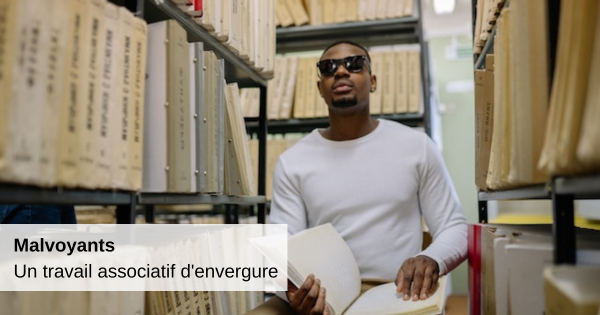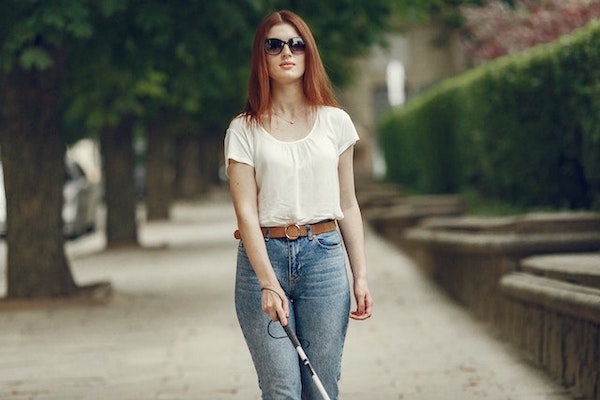Visually impaired: a large-scale associative work

The issue of disability is one of the few to bring together all political sides. Inclusion and the help provided are generally agreed upon. However, it is clear that many shortcomings are observed every day in society. Today, the work of certain associations lays the foundations for this lack and tends to contribute to improving the daily lives of visually impaired people. Inclusive programs or necessary needs, here are some projects launched and proposed by associations.
Visually impaired: context and work of associations
Despite technical progress and the political will to improve the daily lives of visually impaired people, some figures are still chillingly real. According to the Fédération des Aveugles de France, 50% of visually impaired people are unemployed. Only 10% of websites are accessible to the visually impaired, 1 film out of 5 released in cinemas is audio-described, like only 4% of television programs. Currently, the figure is 253 million people affected.

Faced with this scourge, the organization of corrective or adaptability actions is still done too much at the associative level. Among these organizations, we can cite the Fédération des Aveugles de France , but also the Valentin Haüy association , the Initiative for the inclusion of the visually impaired (IPIDV), INJA-Louis Braille , Voir Ensemble and the French confederation for the social promotion of the blind and amblyopic (CFPSAA). procedure to follow in the context of improving the living conditions of the visually impaired.
Digital, an advance that relegates the visually impaired to another era?
While some visually impaired people have been able, thanks to an extraordinary will, to realize their dreams by performing feats , it is nonetheless necessary to adapt our societies to needs that seem basic to us.
Thus, several large-scale projects and programs have been launched. Concerning digital accessibility, the Federation of the Blind of France has created the Observatory of Compliance with Digital Obligations. This "offers a view of the level of knowledge of the legal obligations in terms of digital accessibility by the organizations covered by the law. It covers a large sample of websites and identifies the presence of elements required by law and which must appear on the website, namely:
- A recent accessibility statement, with a presentation as described in the RGAA (General Reference for Improving Accessibility);
- A visible mention of the level of compliance on the home page;
- A multi-year accessibility plan broken down into annual action plans".

In the same vein, the Valentin Haüy association has split a humorous spot to demonstrate the discrimination due to the use of Captcha on websites.
[= ]
Ambitious programs as necessary
In everyday life, and especially in public transport, much remains to be done. Although pedestrian crossings are increasingly equipped with sound boxes indicating when to cross, many bus stops or metro trains are not equipped to meet the needs of the visually impaired.
A petition for the vocalization of the metro has been launched by members of the CFPSAA. The goal is to challenge the RATP on the glaring shortcomings of the Paris metro. Thus, the association Valentin Haüy organizes every year since 1995 the "Poinçon Magique", a dictation in Braille. The idea of this competition is to promote the knowledge and use of Braille among visually impaired people.
On the artistic side, an exhibition called " A loss of sight " presented the joint work of visually impaired people, a photographer and an artificial intelligence. The exhibition was presented from April 6 to 8, 2023 in Paris.
In the current context, the work therefore remains considerable. It is therefore necessary to rely on the remarkable work of the associations, which however are sorely lacking in resources.


